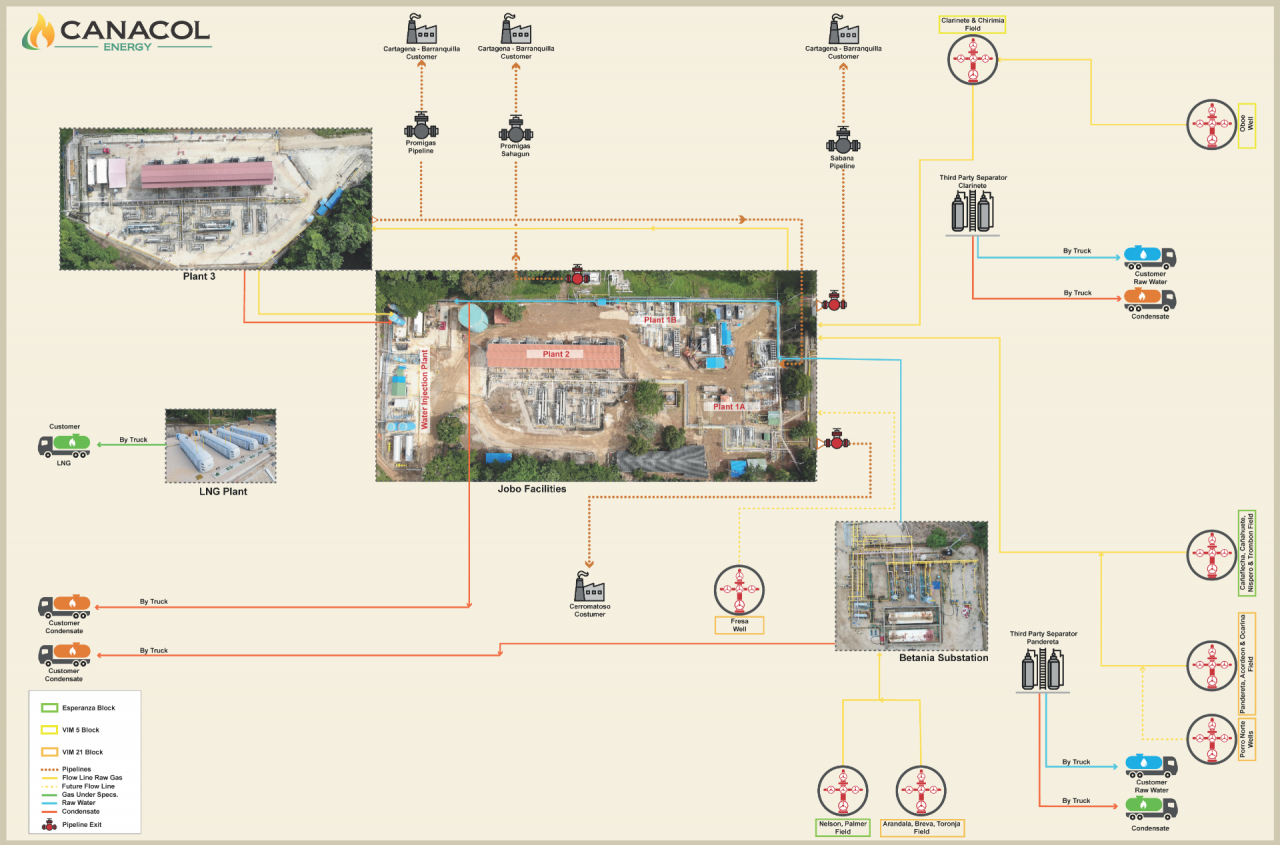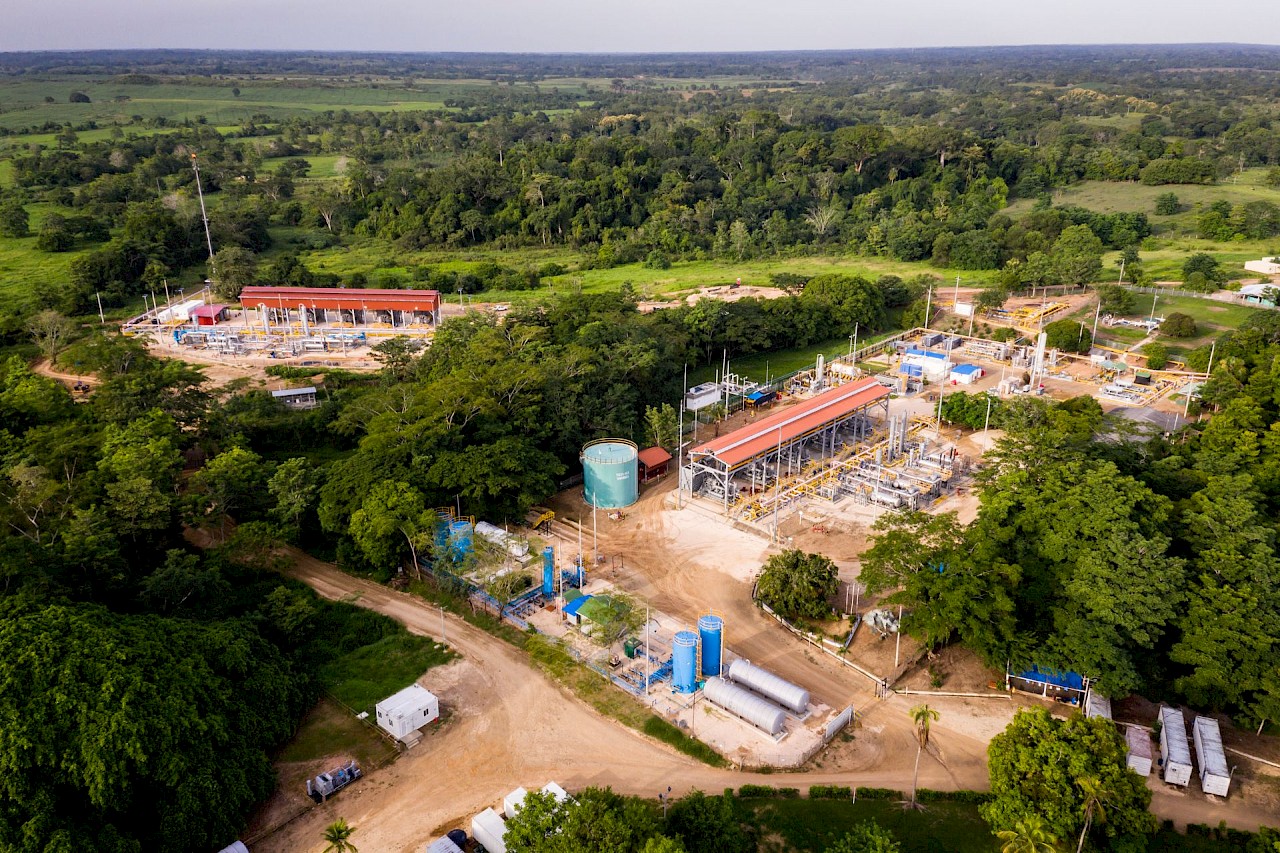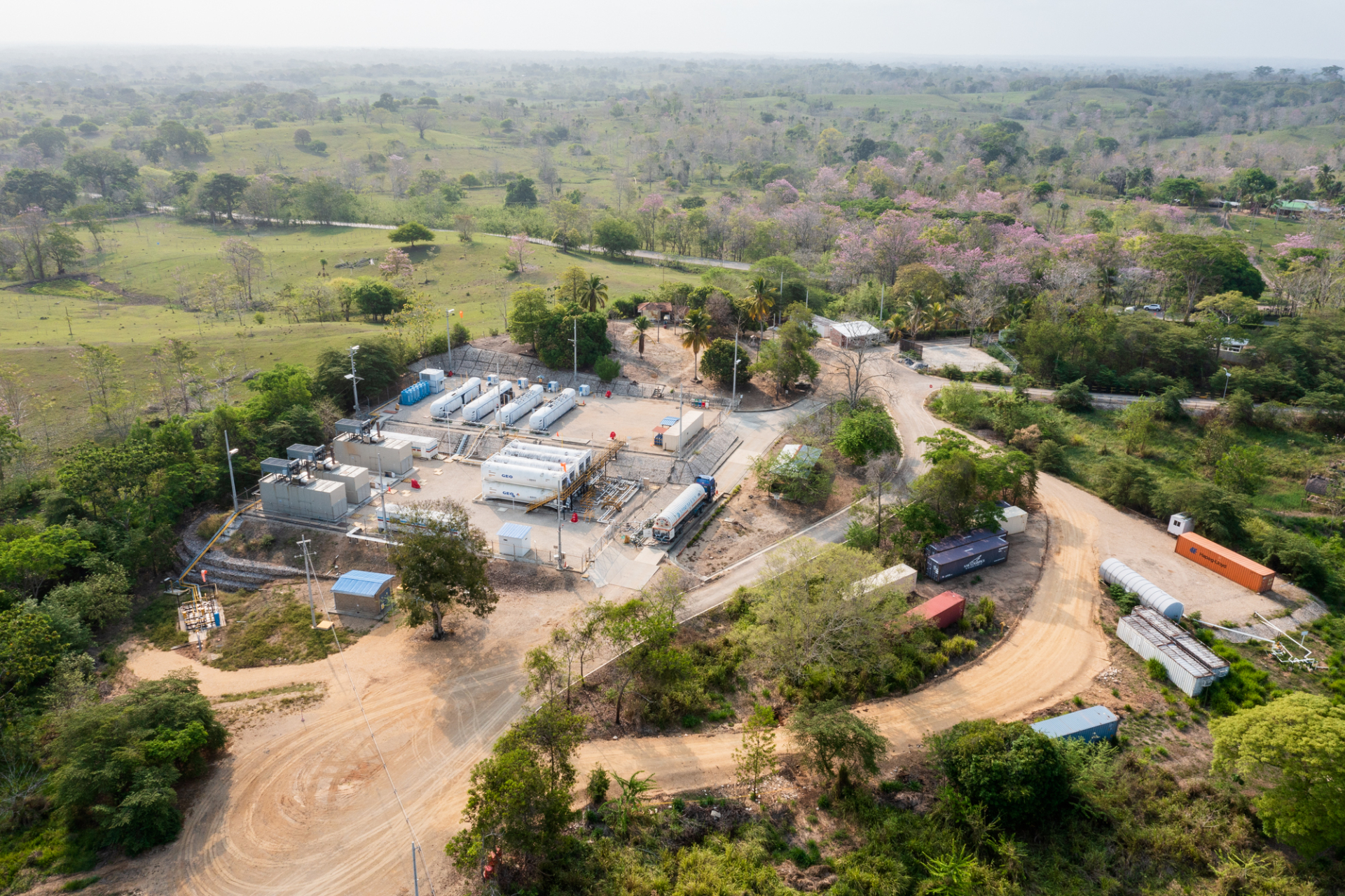Operations Overview
To produce and sell its discovered natural gas reserves, Canacol began building out its gas marketing and infrastructure development capabilities with the construction of central gas processing facilities at Jobo Station, and with partners worked to construct a series of new pipelines that increased take-away capacity from the company’s field operations, all while negotiating a portfolio of long-term US-dollar denominated fixed price take-or pay gas sales contracts with natural gas consumers.
Our gas fields which produce from the Cienaga de Oro and Porquero proven reservoirs are connected to our central Jobo gas processing and treatment facility through more than 169 kilometers of flow lines, mainly flexible steel flow lines.
During our natural gas treatment process, we remove small amounts of moisture and condensates from the natural gas to achieve conditions for sale and use established by Colombian regulations, in particular the Reglamento nico de Transporte de Gas Natural (RUT). With these conditions, the natural gas is ready to be used by industrial, residential, and other consumers.
Our natural gas processing and treatment facilities consist of three plants. The original Jobo 1A/1B are mechanical refrigeration units. Jobo 2 was commissioned in 2016 and Jobo3 was commissioned in 2019. These two plants use a J-T loop to cool the gas and drop out liquids. Each plant has two inlet compressors and two outlet compressors, as well as one spare. The outlet compressors raise the gas pressure to the required pressure of 1,200 psi for inlet to the sales lines.
The process consists of the following stages: i) Primary Separation; ii) Dehydration; iii) Hydrocarbon Dew Point Conditioning; iv) Compression; v) Filtration & vi) Measurement. Gas is collected from wells located in several reservoirs that are spread across the Esperanza, VIM5 and VIM21 blocks. Gas produced from Nelson, Palmer and other fields are collected at the Betania substation and separated from the produced liquids such as condensate and water. Condensate is collected in a vessel for transport by truck and water is sent to the Jobo water treatment and injection plant. The preprocessed gas flows through two 8-inch lines to Jobo. One of the lines is for low pressure gas and the other for high pressure gas.
Gas from the Clarinete field is pre-processed at the Clarinete substation, where condensed and produced water as well as condensate are separated from the gas and collected in storage tanks for trucking. The gas is sent to Jobo along two 17-km flowlines. An 8-inch flow line also connects the Pandereta wells to Jobo. The water we produce is processed and injected back into the subsurface through a Water Injection Plant with over 2,500 barrels of water per day installed capacity.
Once treated, the natural gas exits the Jobo facility via four third-party gas export pipelines:
- 10-inch pipeline flowing south 80 kilometers to the Cerromatoso ferro-nickel mine, one of the largest nickel mines in the world.
- 20-inch pipeline 240 kilometeres going north to Cartagena and Barranquilla where the majority of the gas is used to generate electricity.
- Combination of an 8 inch and 6 inch pipeline with two compressor stations that transports the gas to Cartagena via Sincelejo.
- 6-inch pipeline 10 km to the west to El Tesorito power plant, completed in 2022 and operated by Celsia under a joint venture between Celsia, Proelectrica, and Canacol.
We produce almost pure (97%+) methane, without any significant quantities of natural gas liquids, condensate, light oil, water, carbon dioxide, nitrogen, sulphur, or other gases or impurities. The pure nature of the produced gas stream allows sales via the gas distribution grid after only minimal, energy efficient processing, thereby reducing operating costs, and supporting the high rates of return and low carbon footprint.
Relative to other oil and gas production facilities, which often use significant amounts of energy to process their products prior to shipping, Canacol’s energy consumption per unit of energy produced, or per dollar of revenue generated, is an order of magnitude lower than current industry standards in most countries.
All our equipment is powered by clean-burning gas rather than diesel or coal, therefore our carbon footprint is also relatively low compared to other oil and gas operations. Also, 99% of the gas we produce is utilized with almost no flaring, therefore significantly reducing our carbon footprint.
The risks for accidental leaks of our product streams are minimal given that we actively work hard in preventative maintenance and checking, and we have pipe specialized materials that prevent corrosion and material failure.
We are always actively evaluating new technologies that will help us be more energy efficiency and cost effective, and thus lowering our carbon footprint.
Click map to enlarge (may take time to fully load) 
El Tesorito Power Plant Overview
As part of the company’s overall gas market diversification strategy, Canacol participated in the development of a new near-field 200 MW power generation plant operated by Celsia with 57.5% interest, under a joint venture with Canacol (10%) and Proelectrica (32.5%). The plant is supplied with gas from Canacol’s operations, and began producing electricity that is fed into the national grid in September 2022. The plant’s gas consumption and power generation will depend on its utilization rate, which will depend on market demand and operational factors. At 100% utilization of capacity the plant will consume approximately 40 million standard cubic feet per day in order to generate around 200 MW of power.

El Tesorito Power Plant
Micro LNG Facility Overview
Canacol operates a small-scale liquified natural gas (“LNG”) plant, the first such operation in Colombia. The LNG plant is comprised of four natural gas liquefaction modules, which can convert 2.4 million standard cubic feet per day of gas into 29,000 gallons of LNG. Processed gas from Jobo flows through a line to the LNG plant inlet condenser which removes all trace moisture. The fully dried gas then flows to the cryogenic units where it is liquified by lowering the temperature to 170 degrees C. The liquefied gas flows through cryogenic to insulated storage tanks. This LNG is sold to a third party at the Jobo plant gate for distribution via trucks to their clients. LNG can replace diesel, fuel oil, compressed gas, propane, and other fuels at a considerable reduction in price given the relatively lower cost of natural gas and the large volume of liquified gas that can be transported by truck.
Bolivia
In 2023, the Corporation made a strategic entrance into Bolivia with the execution of three Exploration and Production (“E&P”) contracts with Yacimientos Petroliferos Fiscales Bolivianos (“YPFB”), the Bolivian state oil and gas company. The Corporation placed initial guarantees for a total of US$ 1.4 million. We´re also in the process of seeking government approval for the award of a fourth E&P contract. Bolivia´s gas production has been declining over recent years, and these agreements, executed with the participation of YPFB, are part of the Bolivian government´s efforts to attract investment to increase gas reserves and production. The four E&P contracts expose Canacol to both low-risk mature gas field redevelopments as well as significant gas exploration potential in the largest gas producing basin of Bolivia with a modest capital commitment over 5 years of approximately US$ 27 million of investment. Gas from these contracts can be rapidly commercialized given success as they are strategically located along the main gas pipeline routes with export to Brazil.


